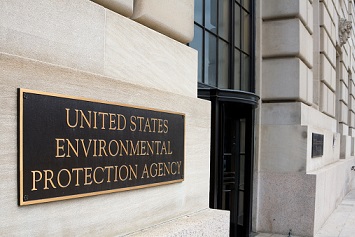Stating that the Trump EPA cannot use a general provision of the Clean Air Act (CAA) to negate a specific provision of the Act, a panel of the U.S. Court of Appeals for the D.C. Circuit vacated an Agency final rule that sought to delay by 20 months the effective date of the Obama EPA’s amendments to the CAA’s Risk Management Program (RMP) (CAA Section 112(r)).

The intent of Section 112(r) is to prevent accidental releases of listed hazardous chemicals from industrial facilities and minimize the consequences of such releases. The court concluded that the EPA’s reason for issuing its Delay Rule (June 14, 2017, Federal Register (FR))—that it needed time to rethink petitions from states and industry to reconsider the amendments—conflicts with Congress’s explicit direction that the Agency must “assure compliance as expeditiously as practicable” with the RMP’s implementing regulations.
Expanded RMP
The EPA’s RMP amendments (January 13, 2017, FR), called the Chemical Disaster Rule, revised dozens of existing RMP requirements in three major areas: (1) accident prevention, including expanded postaccident investigations, more rigorous safety audits, safety training, and safer technology requirements; (2) emergency response, including more frequent coordination with local first responders and emergency response committees, and more intensive incident-response exercises; and (3) public information disclosure, including public disclosure of safety information and public-meeting requirements.
The amendments were the result, at least in part, of an August 2013 Executive Order (EO) from President Barack Obama, which directed the Agency to determine if it can and should expand the RMP to address additional regulated substances and types of hazards. The EO mentioned the catastrophic accident at the West, Texas, fertilizer facility, as well as other accidents as evidence that expansion may be necessary.
The final Chemical Disaster Rule has an overall effective date of March 14, 2017. Other provisions, including most local emergency-response coordination requirements, became effective on March 14, 2018. Also, requirements for emergency response exercises, public information-sharing and postaccident public meetings, third-party audits, more rigorous postincident analyses, and safer technology requirements become effective 3 years later, on March 15, 2021.The compliance deadline for covered facilities to submit an updated risk management plan is March 14, 2022.
Two Prior Delays
Upon taking office, the new administration delayed the effective dates of 29 regulations, including the Chemical Disaster Rule, by 60 days. The Agency then exercised its CAA authority by extending the delay of the rule’s effective date by an additional 3 months. But in its subsequent Delay Rule, the Agency stated that 3 months was insufficient to complete the reconsideration process; accordingly, the Delay Rule pushed back the effective date of the Chemical Disaster Rule by 20 months, to February 19, 2019. The rule affected only those compliance dates that occurred before February 19, 2019.
The panel identified many problems with the Delay Rule but was most concerned that the CAA authority for the rule cited by the Agency was insufficient to justify the action.

Specific and General
The EPA’s 3-month delay of the Chemical Disaster Rule is explicitly authorized by CAA Section 7607(d)(7)(B)). That section states that the EPA must convene a proceeding to reconsider an RMP rule and that during such reconsideration, the effectiveness of the rule may be stayed “for a period not to exceed three months.” The panel had no objection to the 3-month stay.
To back up the 20-month additional delay, the EPA cited Section 7412(r)(7). This section authorizes the Agency to promulgate regulations to implement the RMP. The panel regards Section 7412(r)(7) as “general rulemaking authority.”
The panel states:
“EPA cannot escape Congress’s clear intent to specifically limit the agency’s authority under Section 7607(d)(7)(B) by grasping at its separate, more general authority under Section 7412(r)(7). That would almost always allow EPA to avoid the restrictions of Section 7607(d)(7)(B) by simply insisting it was invoking Section 7412(r)(7), even when it is indisputably responding to a Section 7607(d)(7)(B) petition and reconsidering a rule under that specific provision. Such an unreasonable interpretation would deprive the more specific authority of virtually all effect.”
No Authorization Under Section 7412(r)(7)
The panel elaborates on Section 7412(r)(7), stating that it is a comprehensive accident prevention regime affording the EPA broad discretion as to regulatory tools. The section references types of substantive actions that the EPA may require by regulation—release prevention, detection, and correction requirements, which may include monitoring, recordkeeping, reporting, training, vapor recovery, secondary containment, and other design, equipment, work practice, and operational requirements. Once the EPA makes a substantive regulatory choice—to add, modify, or subtract requirements—the Agency must set an effective date for that choice that will assure compliance as expeditiously as practicable.
“Reading the plain text makes clear that Congress is seeking meaningful, prompt action by EPA to promote accident prevention,” states the panel. “The Delay Rule is not the type of substantive amendment authorized by Section 7412(r)(7). EPA has interpreted that section as according it flexibility to make a rule effective with no specific outside date beyond that which assures compliance as expeditiously as practicable.”
Why 20 Months?
The panel also found that the 20-month delay had no relation to the amount of time industry needed to comply with the amendments and instead had more to do with the time the EPA needed to complete its reconsideration. The panel says the Delay Rule was the result of a “policy preference” that was unassociated with assuring industry compliance with the CAA and the RMP. The panel states:
“The preamble [to the Delay Rule] reveals no attempt by EPA to consider how much time industry needs to comply, or why 20 months, as opposed to some other period of delay, are necessary. Nor does it engage with EPA’s determinations and findings in the Chemical Disaster Rule with respect to compliance dates. Nor does EPA claim to have changed those findings or taken any action with respect to them. Instead, EPA posits that the Delay Rule is designed to allow it time to rethink the difficulties of compliance planning while also claiming it is not revisiting the compliance dates or the rationale underlying them. To the extent EPA offers any reasoning—namely, that ‘[a] delay of 20 months is a reasonable length of time’ for it ‘to engage in the process of revisiting issues in the underlying [Chemical Disaster Rule]’—that reasoning does not relate to what is ‘practicable’ for compliance by regulated sources; its explanation relates to its own unidentified, new ‘policy preferences’ and the mere fact of reconsideration.”
“This makes a mockery of the statute,” the panel concludes. “The Delay Rule does not have the purpose or effect of ‘assur[ing] compliance’ with Section 7412(r)(7); it is calculated to enable non-compliance.”
The panel’s opinion in Air Alliance Houston et al., v. EPA is here.

